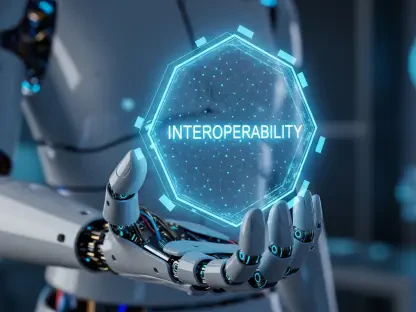In an era where technology redefines various sectors, the integration of artificial intelligence (AI) into hospice care represents a transformative shift. Traditionally grounded in empathy and human connection, hospice care is now blending with technological innovations to enhance patient experiences and outcomes. As the preference for spending one’s final days at home grows, the introduction of AI-driven tools within this sensitive field highlights a compelling trend with significant implications.
Current Landscape and Growth of AI in Hospice Care
Data and Adoption Trends
AI is becoming increasingly prevalent in home-based hospice care. Statistics indicate that from 2025 onwards, as the aging population continues to grow, the demand for hospice services is expected to rise, necessitating innovative care delivery methods. Recent studies show a remarkable increase in the adoption of AI technologies within hospice settings. Compared to conventional healthcare services, hospice care has experienced around a 32% surge in utilization, driven largely by advancements in AI applications aimed at enhancing care quality.
Real-World Applications
Numerous case studies highlight the pragmatic application of AI in hospice care environments. For instance, AI systems like virtual care assistants are being used to unobtrusively monitor patient environments, enabling early detection of potential health issues. Pioneering companies in this domain demonstrate how AI tools facilitate logistics, from predicting patient needs to personalizing care plans, all while allowing healthcare providers to focus more on delivering empathetic human care. Such innovations underscore AI’s potential to support and improve—not replace—human efforts.
Expert Insights and Perspectives
Commentary from industry thought leaders sheds light on AI’s multifaceted impact on hospice care. Experts highlight that while AI offers profound possibilities for optimizing care coordination and expanding reach, it also presents challenges such as ensuring data privacy and maintaining the personal touch inherent to hospice care. Despite these challenges, the consensus remains that AI’s benefits, such as improved efficiency and enhanced patient monitoring, offer promising opportunities to revolutionize end-of-life care.
Future Prospects and Implications
As AI technology continues its trajectory of advancement, its future role in hospice care appears both promising and complex. Emerging developments suggest AI will play a crucial part in predictive analytics, allowing for earlier intervention and potentially better patient outcomes. However, ethical considerations remain paramount, as the application of AI in such an intimate aspect of life necessitates ongoing dialogue about privacy and the preservation of human dignity. Striking the right balance between leveraging AI for efficiency and retaining the field’s warmth and compassion is crucial.
Conclusion
Looking forward, the AI-driven transformation in hospice care holds the potential to reshape the landscape of end-of-life services fundamentally. As technology continues redefining healthcare paradigms, the focus should advance toward creating user-friendly interfaces that cater to the elderly and terminally ill. Emphasizing the human aspect while efficiently integrating AI tools offers a promising path ahead, ensuring the core tenets of hospice care—comfort, dignity, and personal connection—remain intact. The industry’s embrace of this technological coalescence underscores a commitment to evolving with empathy and care, securing a future where human experience remains at the heart of innovation.









